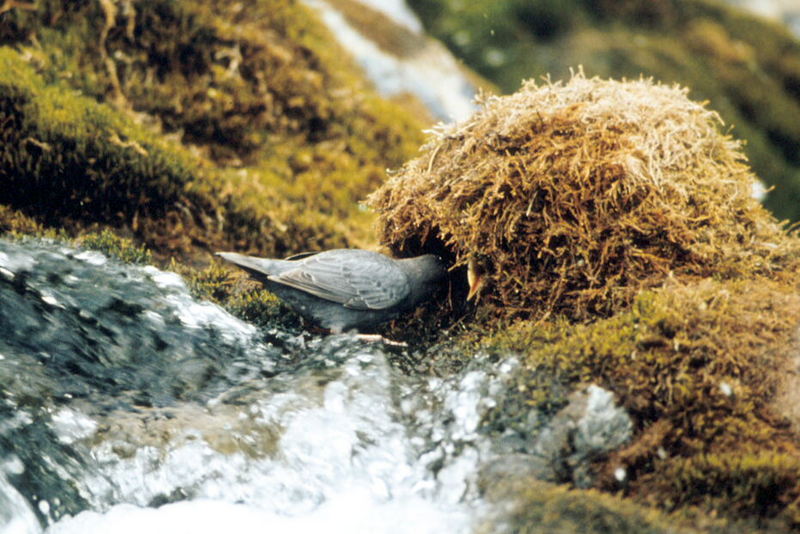| The American dipper (Cinclus mexicanus), also known as a water ouzel, is a stocky dark grey bird with a head sometimes tinged with brown, and white feathers on the eyelids that cause the eyes to flash white as the bird blinks. It is 16.5 cm long and weighs on average 46 g. It has long legs, and bobs its whole body up and down during pauses as it feeds on the bottom of fast-moving, rocky streams. It inhabits the mountainous regions of Central America and western North America from Panama to Alaska. Order: Passeriformes, Family: Cinclidae. |

